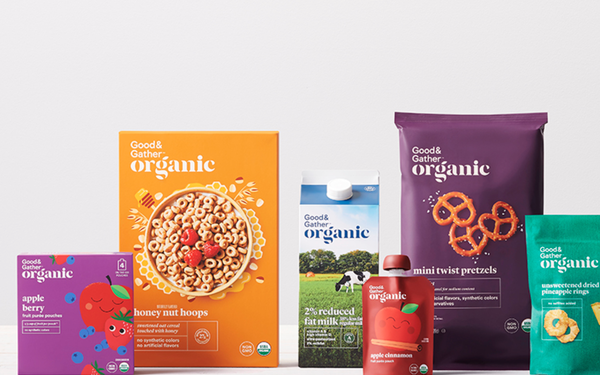Target’s Good & Gather store brand
by Sarah Mahoney @mahoney_sarah
Source: www.mediapost.com, July 2023
It’s not hard to see why people are enthusiastically ditching national brands in favor of private-label groceries. Inflation has consumers looking for any way to keep costs down, and often, they perceive store brands as just as good. But new research from Circana finds that this steady thriftiness is already impacting broader shopping behavior.
The latest on private-label spending comes from the Private Label Manufacturers Association semi-annual research, noting an increase of 8.2% in private label purchases in the first half of the year, rising to $108 billion. And that marks a 16% increase from the first half of 2021.
Spending on these products hit record sales and share gains, as they have for the last 18 months. In unit sales, sales of private-label goods slipped 0.5%, while national brands dropped 3.4%.
June witnessed a steeper drop in sales for national brands, plummeting by 5.1%, further cementing the rise of private-label products.
Those gains come even as inflation slows, falling to 4.7%, the slowest rate of price increases for groceries since September 2021, according to the June Consumer Price Index.
All that brings store-brand dollar share to a record 18.8% for the half-year, with consumers especially keen on private-label beverages, up 19%, and general food and refrigerated food, up 16%.
“These numbers may grow as student loan repayments resume and borrowers of all ages lean further into strategies to tighten household budgets, including adding more value-friendly store brand items to their grocery list,” says Mary Ellen Lynch, principal at Circana, in the announcement.
While people initially choose a store brand as cost-saving, many started dabbling in them due to pandemic-related shortages. The trade association notes that this period of unprecedented trial has turned many people into permanent fans.
That’s pushed stores to improve quality and expand assortments, making their offers even more appealing.
Meanwhile, a different report from Circana tracks an intensifying trend, showing a marked decrease in consumer spending on discretionary general merchandise compared to consumer packaged goods. Food and beverage CPG spending grew 5% in dollars in June and shrank 2% in units. Non-edible CPG sales revenue rose 2%, while unit sales declined 5%. Those trends are continuing into July.
“A new sales performance baseline has been established in discretionary general merchandise with sustained decline levels through the second quarter of the year,” Marshal Cohen, Circana’s chief retail industry advisor, said in the report. “And demand movement has started to develop in CPG.”
Circana says these spending shifts are part of a trend that started in 2022, leading to weaker-than-expected sales during this year’s Valentine’s Day, Easter, Mother’s Day and Father’s Day.
“Economic challenges have reinforced behavioral shifts that emerged from the pandemic, including consumers becoming more thoughtful about how and what they spend their money on, which ultimately affects when the spending takes place,” writes Cohen. “Retailers and manufacturers need to recognize the shifts happening to the retail landscape and plan accordingly, particularly as we approach the major retail holidays, like the back-to-school season, Black Friday and Christmas.”

